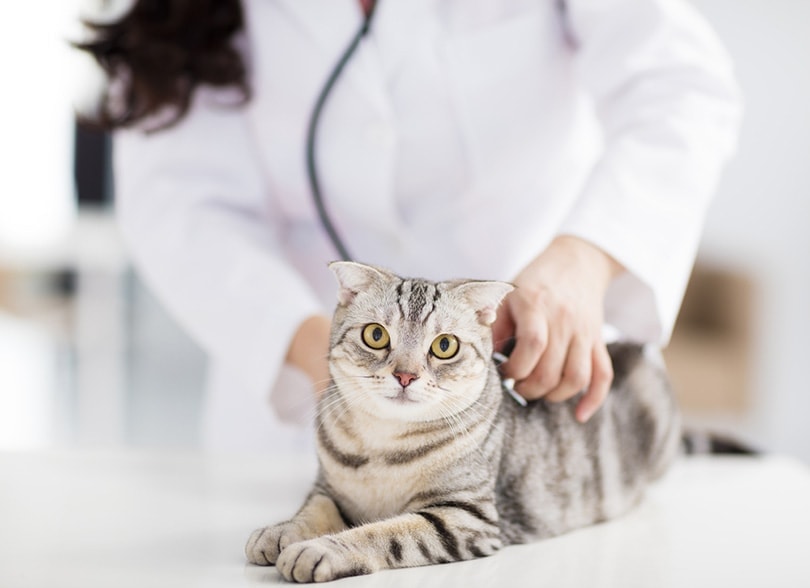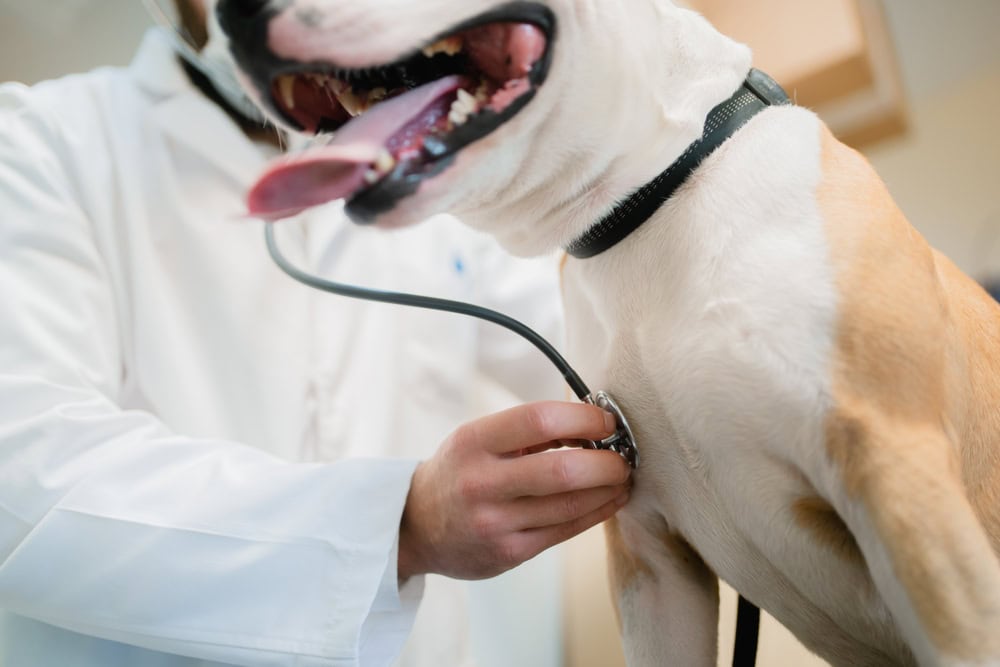Main Causes of Urinary Tract Infections in Cats (Vet Answer)

Updated on
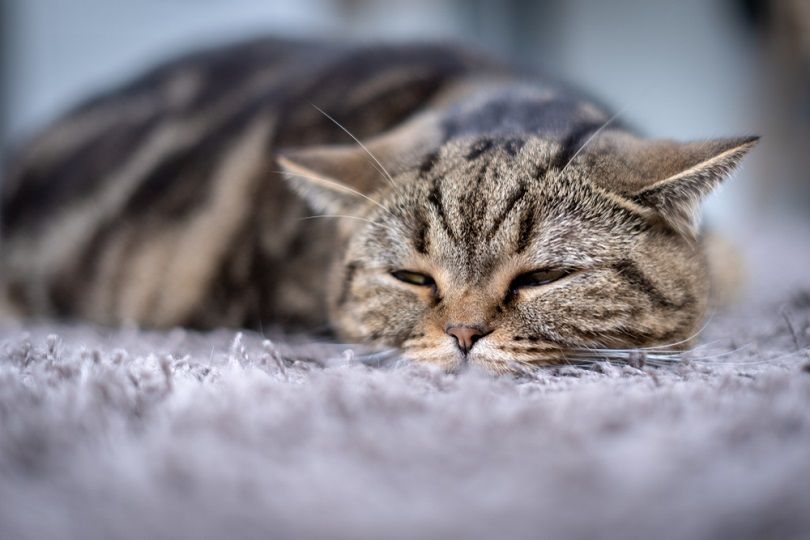
Urinary tract infections are commonly known as UTIs. For cats, they are almost always caused by bacterial infections of the organs that produce, store, and excrete pee. The urinary tract is supposed to be sterile, but when bacteria invade, it becomes inflamed and painful. Read on to learn more about UTIs in cats and how to prevent them.
Where Does the Bacteria Grow?
The invading bacteria grow in the urine and in the walls of the bladder, kidneys, and associated connective ‘tubing’. The bacteria cause the walls of the organs to become inflamed, sore, swollen, and slough off mucous membrane layers.
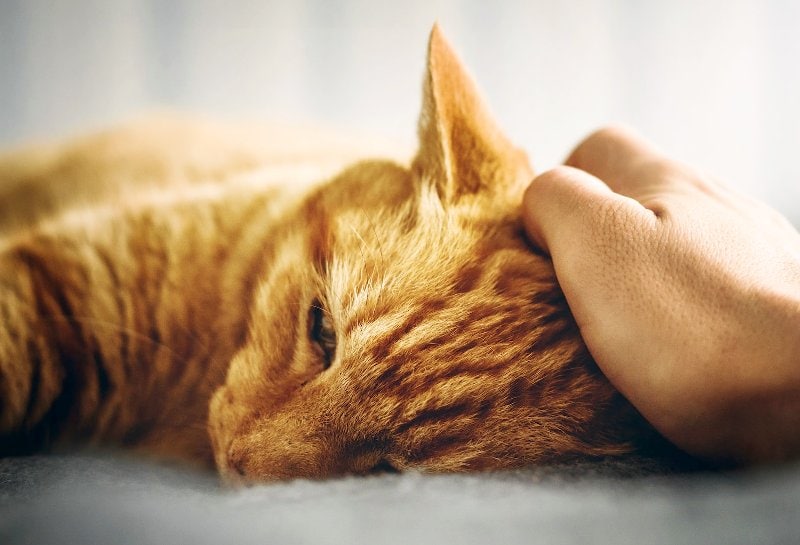
What Happens to the Organs When the Bacteria Invade?
The inflamed and swollen walls make it painful to urinate, so cats will often only pee a little bit at a time. Usually, this is the first sign of a UTI; a cat will go in and out of the litter box, only peeing a little bit, and then trying again. Sometimes they cry or flinch in pain.
The swollen walls also make it difficult for the sphincters of the bladder to shut completely and remain waterproof. So cats often develop some level of incontinence—they dribble urine without meaning to.
How Does the Bacteria Invade?
Problems in the urinary tract are common in cats. There are dozens of mechanisms of disease that cause problems or changes to the urinary system. And often, when one problem occurs, a UTI is close to follow.
Cats can have a lot of problems with their urethra, in particular. The urethra is the tube that connects the bladder to the outside of the body. It can get plugged up, it can get pushed out of place by other organs, and the muscles that control it can weaken. All these types of things open the tube up to bacterial invasion and infection.
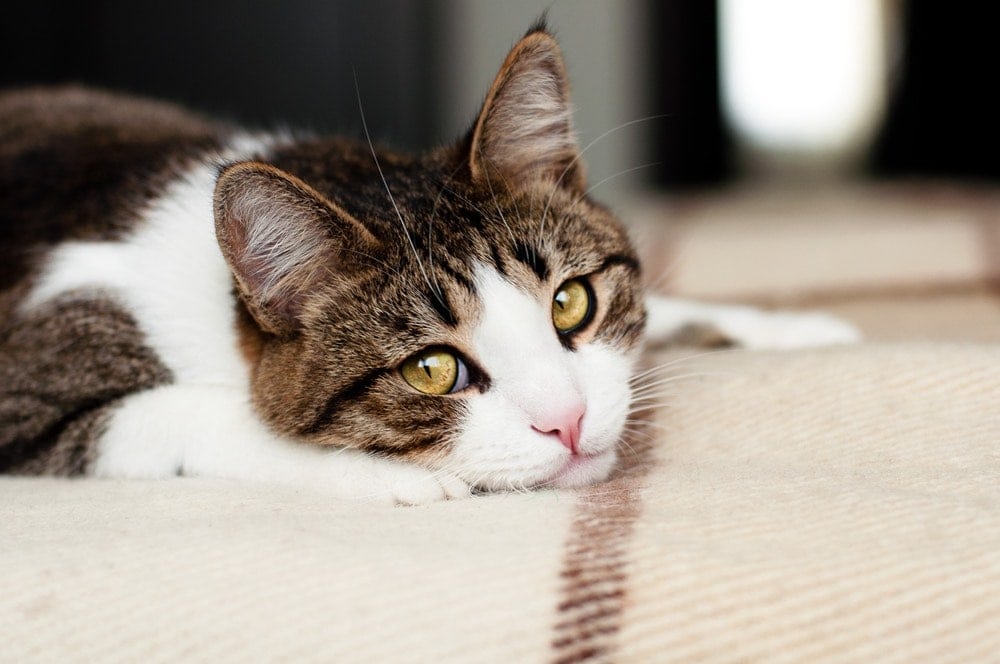
 Ascending Bacterial Infections
Ascending Bacterial Infections
Most UTIs occur when bacteria spread up the tract—from the outside, through the urethra, to the bladder, and up to the kidneys.
Even infections at the top, in the kidneys, usually start as lower urinary tract infections with the bacteria traveling from outside, up to the bladder, and then to the kidneys.
Lower vs Upper UTIs
Upper urinary tract infections are when the kidneys are infected with bacteria. Lower urinary tract infections involve the bladder and the urethra.
Most of the time, when people refer to a UTI, they are talking about a lower UTI because upper UTIs are much rarer, but they are much more clinically significant.
Cats can hide the fact that they have a lower UTI. They hide their discomfort and can go about their lives, apparently happy and comfortable for a long time. However, upper UTIs are much more difficult to hide, with cats showing more significant signs.
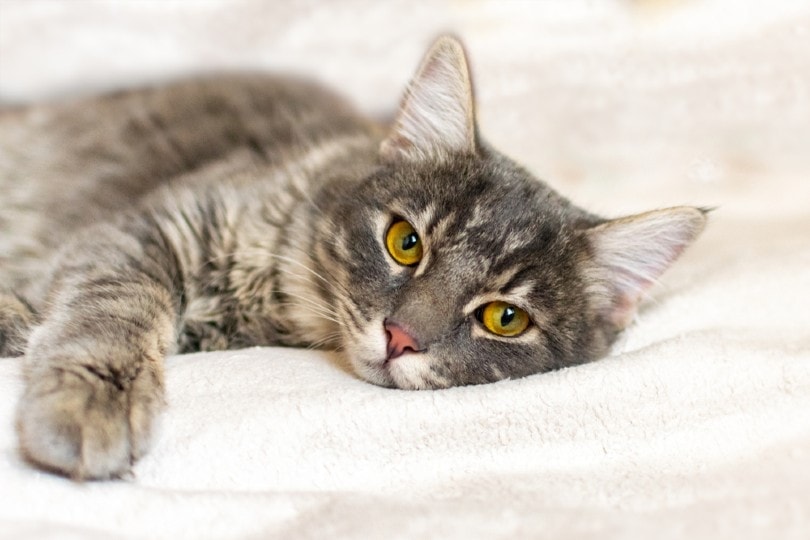
Signs of a Lower UTI:
- Pain in the litter box
- Peeing in small amounts many times
- Straining to pee
- Unusually pee outside the litter box
- Red or blood-stained pee
Signs of an Upper UTI:
- Depression
- Lethargy
- Vomiting
- Inappetence
- Painful urination
- Painful belly
 How UTIs Are Diagnosed
How UTIs Are Diagnosed
If you suspect your cat has a UTI, the vet will do at least two important tests: urinalysis and Culture & Sensitivity.
- Urinalysis: tests and examines the content and chemicals of the urine.
- Culture & Sensitivity: grow any bacteria in the urine to prove they are present and tests that antibiotics work to kill the bacteria
UTIs are treated with antibiotics and often pain relief, especially if your cat is very sore.
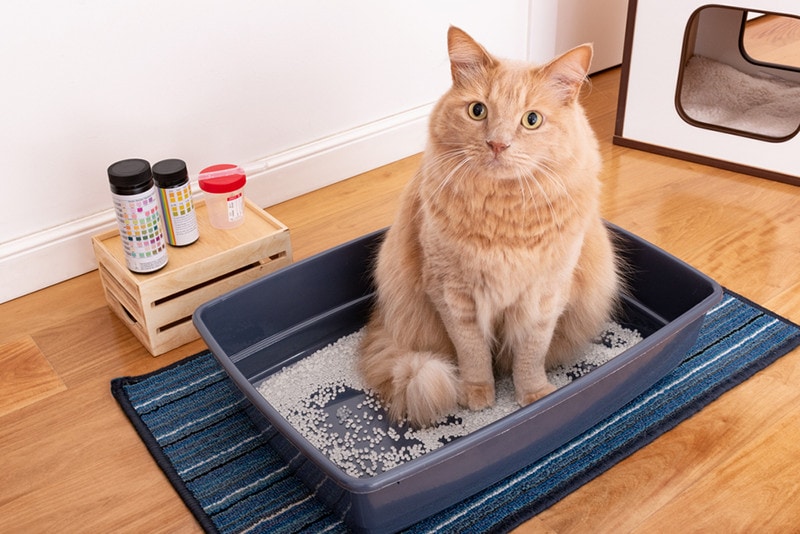
 Frequently Asked Questions (FAQs)
Frequently Asked Questions (FAQs)
Why do I have to pay for expensive tests if antibiotics are the cure?
Finding an antibiotic that works is crucial. If the bacteria do not die when exposed to the antibiotics, the infection will not heal and could get worse—and even more expensive. Certain antibiotics work better on certain bacteria and not so well on others. The Culture & Sensitivity test tells the vet what type of bacteria and, by extension, what antibiotic to use. So, you don’t have to buy more than one antibiotic.
Just because an antibiotic is supposed to work does not mean it always will. Some groups of bacteria have developed resistance to the antibiotics that are supposed to kill them. The Culture & Sensitivity test illuminates this problem, so you don’t have to pay for antibiotics that don’t work. The Culture & Sensitivity tests the antibiotics to make sure they work on this group of bacteria. Without this test your cat would be the test subject, using their bladder to test if the antibiotics work or not, which is not ideal.
Knowing which antibiotics work the best helps vets keep antibiotic resistance from developing. Antibiotic-resistant bacteria are dangerous to animals and people because they can infect both but cannot be killed by antibiotics. Using Culture & Sensitivity testing helps vets protect humans and animals from this dangerous global pandemic.
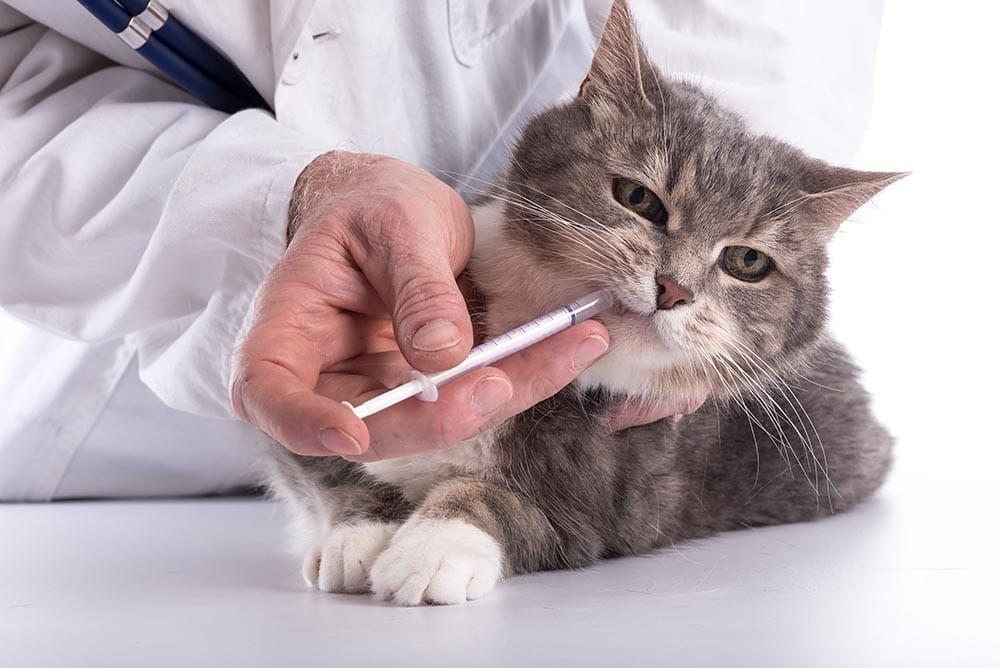
How can I prevent UTIs?
Some tricks can help your cat maintain a healthy urinary system, but they are not a guarantee. The main goal is to increase how much they drink and increase the number of times they pee.
- Offer multiple water bowls
- Offer still and moving water, so they can choose
- Feed wet food by adding water to their food
- Keep multiple litter boxes
- Keep litter boxes clean and enticing
- Keep everyone from fighting over limited resources; if they fight over a water bowl, offer another one
- Keep your cat’s home as stress-free as possible
Can I wait to see if my cat recovers on their own?
These tricks can help prevent a UTI, but they are not likely to cure a UTI. If your cat has a bacterial infection, it usually needs antibiotics to get better. And the risk of waiting to see if they get better increases the chances the infection spreads to the kidneys.
It also increases the chances of the infection getting so bad it causes permanent scarring and trauma. Plus, catching a UTI early and treating it early is always easier (and cheaper) than treating one that has festered for a long time.
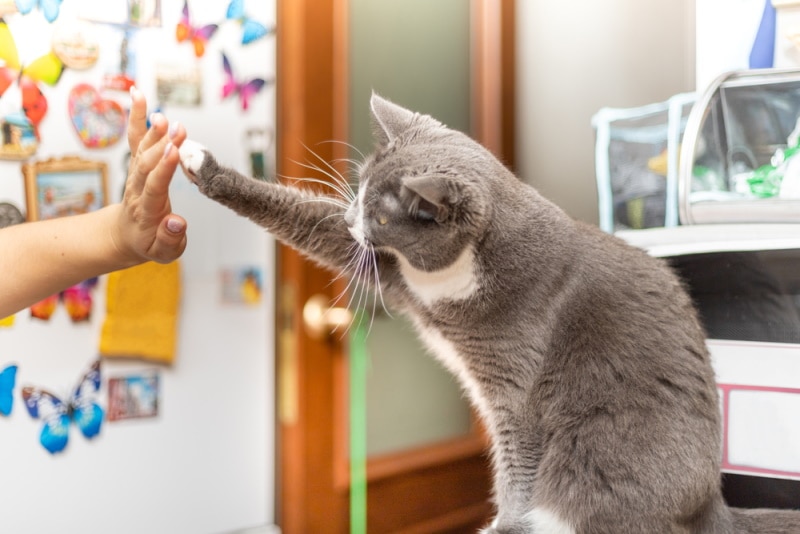
Why does my cat have another UTI?
Sometimes cats who have had a UTI in the past get them again and again. This might be because something else is going on with the urinary tract, and needs further testing with a vet.
UTIs are common in cats with all types of chronic diseases, such as diabetes or even arthritis. So, if your cat has a life-long disease, be extra alert for UTIs.
 Last Thoughts
Last Thoughts
UTIs seem like they would be easy to treat and prevent in cats. But they can be quite complex and can cause a cat to get very, seriously ill and cause permanent damage. By performing tests early, you can help keep the overall cost of treatment down by catching the culprit bacteria early.
A vet needs to perform certain tests to keep your cat from becoming a drug test subject and to make sure the right antibiotic is being used. Making sure that a cat’s UTI is not creating antibiotic-resistant bacteria is crucial for your cat’s health and your own.
Featured Image Credit: one photo, Shutterstock


